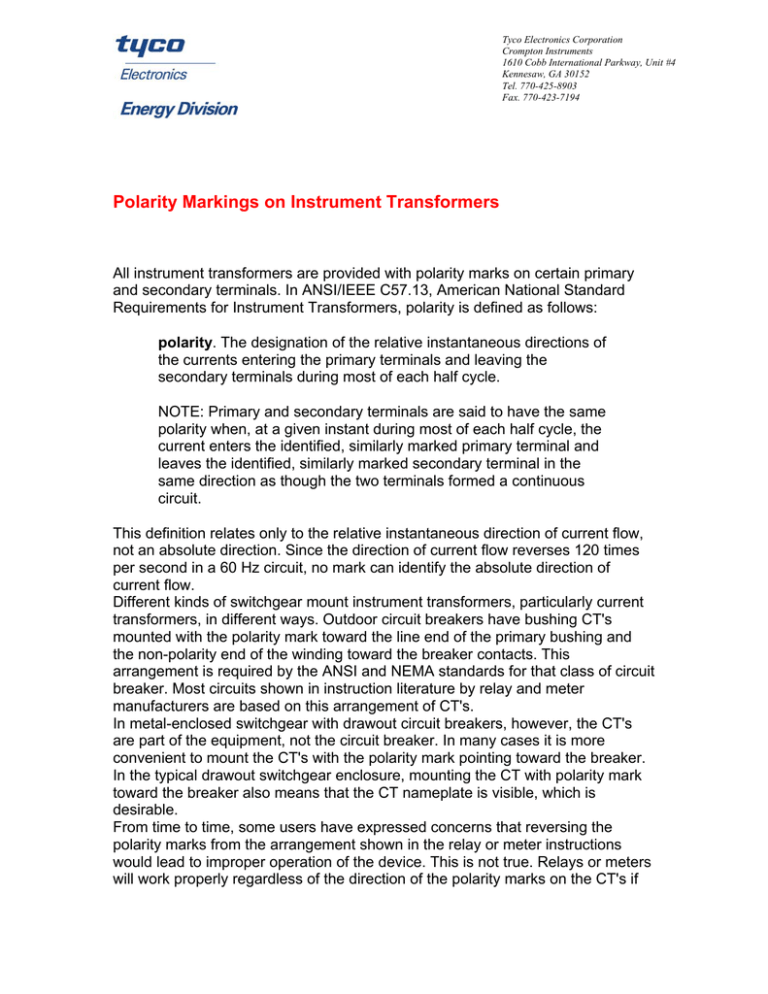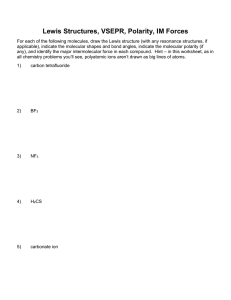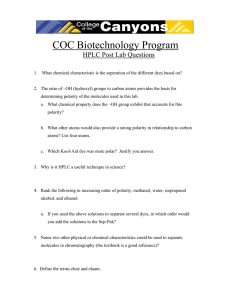Polarity Markings on Instrument Transformers
advertisement

Tyco Electronics Corporation Crompton Instruments 1610 Cobb International Parkway, Unit #4 Kennesaw, GA 30152 Tel. 770-425-8903 Fax. 770-423-7194 Polarity Markings on Instrument Transformers All instrument transformers are provided with polarity marks on certain primary and secondary terminals. In ANSI/IEEE C57.13, American National Standard Requirements for Instrument Transformers, polarity is defined as follows: polarity. The designation of the relative instantaneous directions of the currents entering the primary terminals and leaving the secondary terminals during most of each half cycle. NOTE: Primary and secondary terminals are said to have the same polarity when, at a given instant during most of each half cycle, the current enters the identified, similarly marked primary terminal and leaves the identified, similarly marked secondary terminal in the same direction as though the two terminals formed a continuous circuit. This definition relates only to the relative instantaneous direction of current flow, not an absolute direction. Since the direction of current flow reverses 120 times per second in a 60 Hz circuit, no mark can identify the absolute direction of current flow. Different kinds of switchgear mount instrument transformers, particularly current transformers, in different ways. Outdoor circuit breakers have bushing CT's mounted with the polarity mark toward the line end of the primary bushing and the non-polarity end of the winding toward the breaker contacts. This arrangement is required by the ANSI and NEMA standards for that class of circuit breaker. Most circuits shown in instruction literature by relay and meter manufacturers are based on this arrangement of CT's. In metal-enclosed switchgear with drawout circuit breakers, however, the CT's are part of the equipment, not the circuit breaker. In many cases it is more convenient to mount the CT's with the polarity mark pointing toward the breaker. In the typical drawout switchgear enclosure, mounting the CT with polarity mark toward the breaker also means that the CT nameplate is visible, which is desirable. From time to time, some users have expressed concerns that reversing the polarity marks from the arrangement shown in the relay or meter instructions would lead to improper operation of the device. This is not true. Relays or meters will work properly regardless of the direction of the polarity marks on the CT's if the connections are made properly. Great care must be taken in making these connections, especially for such things as differential relays on delta-wye transformers, but proper operation is not a function of which way the polarity marks point.


